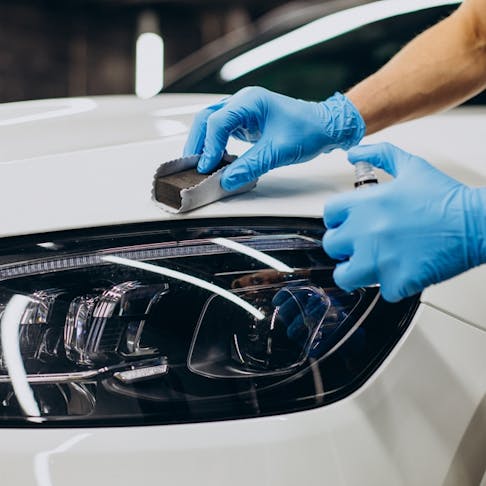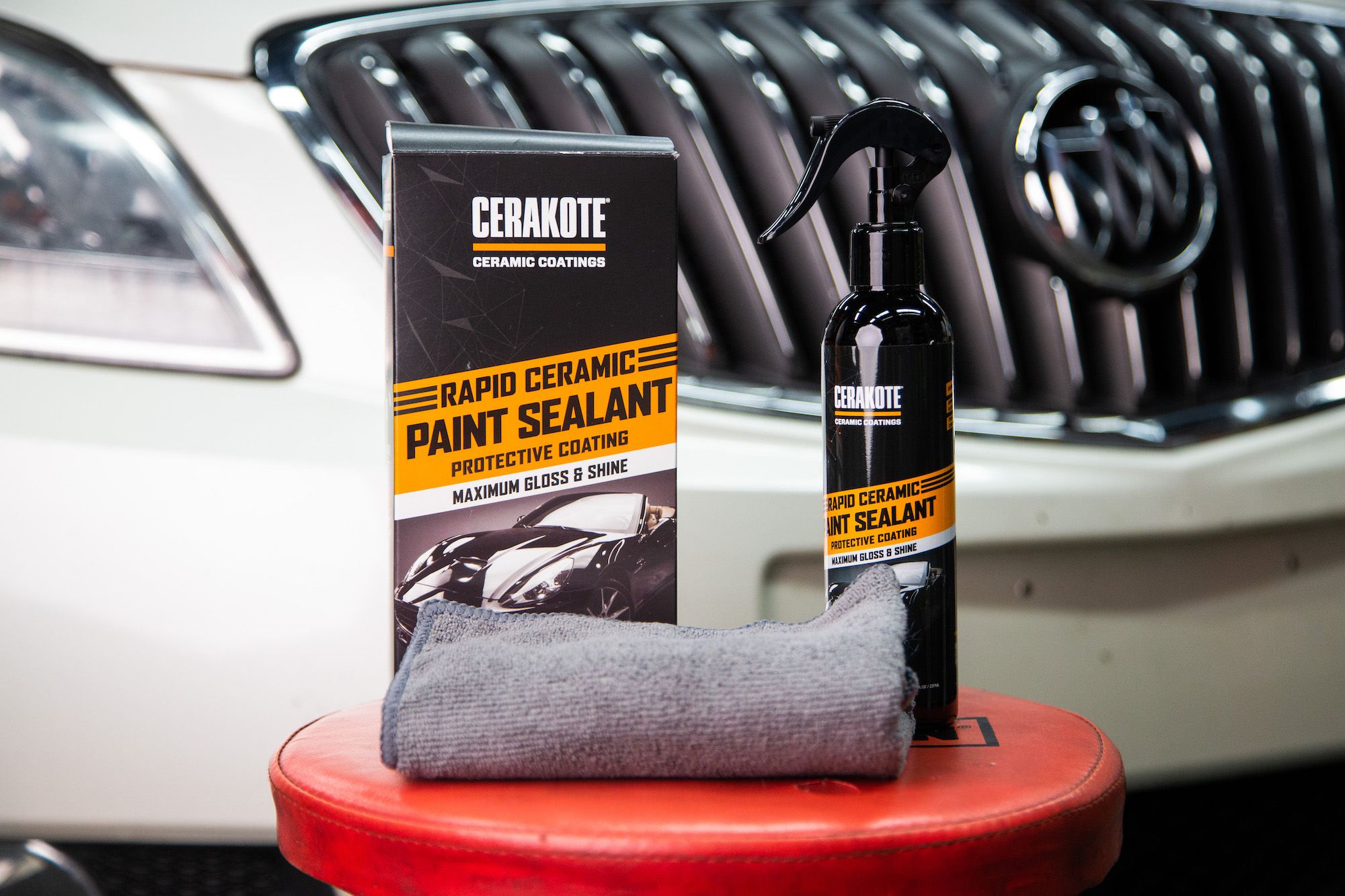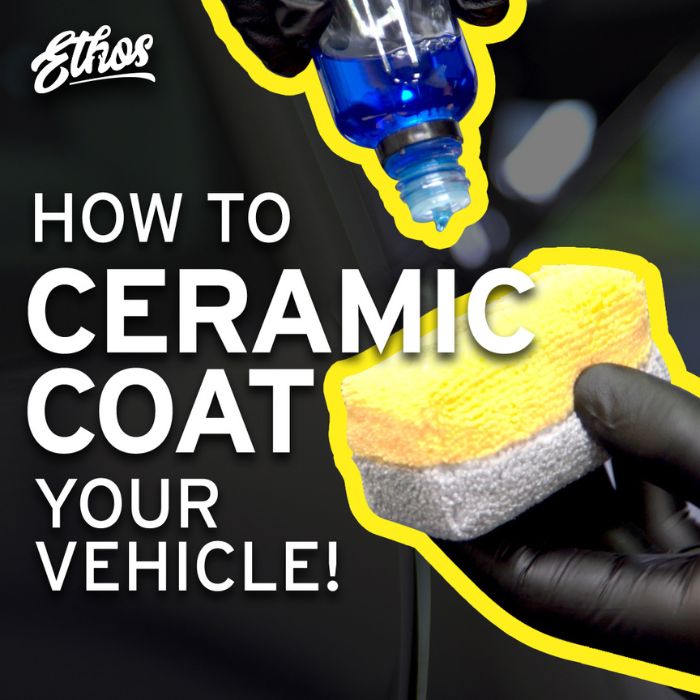Discover Ceramic Pro: Advanced Finish Solutions for Your Automobile
Discover Ceramic Pro: Advanced Finish Solutions for Your Automobile
Blog Article
The Science Behind Ceramic Finishing: How It Enhances Your Car's Visual and Longevity

Comprehending Ceramic Finishing Chemistry
The chemical composition of ceramic finishes plays an important role in identifying their toughness and safety properties on car surface areas. Ceramic coverings are typically composed of silicon dioxide (SiO2), which is a main component providing firmness and heat resistance. Various other ingredients such as titanium dioxide, silicon carbide, and polysilazanes are usually included to enhance details homes like UV attachment, hydrophobicity, and resistance.
Silicon dioxide, likewise referred to as silica, creates a solid and transparent layer on the car surface when applied properly. This layer functions as a shield, shielding the paint from ecological impurities, UV rays, oxidation, and chemical spots. Titanium dioxide aids in obstructing damaging UV rays that can create paint fading and damage. Silicon carbide is recognized for its abrasion resistance, making the ceramic finishing tough and long lasting versus physical damages. Polysilazanes are used to improve the layer's adaptability and adhesion to the vehicle's surface, ensuring durable security. Understanding the chemistry behind ceramic layers is essential for both applicators and automobile owners to value the value and advantages these finishes offer in preserving the aesthetic appeal and long life of cars.
Enhanced Gloss and Mirror-like End Up
Understanding the chemical composition of ceramic layers not only exposes their safety residential or commercial properties however also clarifies exactly how they add to accomplishing an improved gloss and mirror-like coating on car surface areas. The trick to the glossy result lies in the nano-ceramic bits present in the layer. These bits load in tiny pores and blemishes on the surface area, producing a smooth and level finish. As light hits the coated surface area, it mirrors evenly, offering the appearance of a deep, glossy luster. In addition, the chemical structure of ceramic finishings allows them to create a strong bond with the lorry's paintwork, protecting against oxidation and maintaining the clarity of the finish in time. This bond also stands up to ecological contaminants, such as dirt and grime, that can boring the shine of the lorry. The combination of filling up residential or commercial properties, light representation, and lasting protection makes ceramic coverings a popular selection for those seeking a mirror-like and dynamic coating for their automobiles.

Influence On Paint Security and Long Life
Ceramic finishes for automobiles considerably boost the long life and defense of the paintwork. By creating a chemically immune layer on top of the automobile's clear layer, ceramic finishes act as an obstacle against numerous environmental contaminants that can harm the paint over time.
In regards to durability, ceramic layers use a durable remedy compared to traditional waxes or sealants. While waxes might last a few weeks to a few months, ceramic coatings can last years with proper maintenance. This prolonged life expectancy not just reduces the regularity of reapplications however also conserves time and effort in the future. Generally, the safety homes of ceramic finishings contribute my link dramatically to protecting the car's paintwork and enhancing its visual charm over an extended period.
Resistance to Contaminants and Harsh Components
With the safety shield given by ceramic coverings against various ecological impurities and elements, automobiles have the ability to maintain their pristine appearance regardless of direct exposure to rough conditions. Ceramic coatings create a strong obstacle that pushes back water, dust, dust, and other usual contaminants, avoiding them from bonding to the car's surface. This hydrophobic nature not just makes cleansing simpler yet likewise decreases the danger of water spots and etching brought on by acidic contaminants. In addition, the chemical resistance of ceramic finishings helps safeguard the paint from bird droppings, pest splatter, tree sap, and various other corrosive compounds that can damage the coating in time.
Moreover, ceramic coatings supply UV security, shielding the lorry's paint from the sunlight's harmful rays that can cause fading and oxidation. This resistance to UV damages helps maintain the color strength and shine of the paint for longer periods. By creating a resilient and resilient obstacle, ceramic finishings make sure that the automobile's outside remains shielded versus a wide variety of impurities and rough components, preserving its aesthetic appeal and sturdiness.
Application Methods and Upkeep Tips
For ideal results when using ceramic layers to automobiles, making use of appropriate techniques and adhering to advised maintenance methods are necessary. Before applying the ceramic finishing, it is crucial to thoroughly clean and decontaminate the lorry's surface to make sure appropriate adhesion.
When using the ceramic layer, it is advised to work in little areas to make certain also protection and to protect against the product from drying go to the website out too promptly. Using applicator pads or microfiber towels, use the coating in a crisscross or up-and-down motion, depending upon the product's instructions. After the layer is applied, allow it to treat for the defined time prior to buffing off any kind of deposit.
In regards to maintenance, normal cleaning with pH-neutral soaps and staying clear of severe chemicals or rough tools will help maintain the ceramic finishing's stability. Regular assessments for any type of damage or endure the coating can likewise aid maintain its safety homes over time.

Conclusion
In verdict, ceramic finish enhances a vehicle's visual appeal and toughness through its chemical composition, supplying a shiny coating and securing the paint from ecological pollutants. Its resistance to severe aspects and simplicity of upkeep make it a preferred selection for auto owners wanting to protect the look of their vehicles. Overall, ceramic coating is a clinically backed remedy why not try this out for preserving the appearance and durability of your car.
Recognizing the chemistry behind ceramic coatings is important for both applicators and automobile proprietors to appreciate the worth and advantages these coverings supply in preserving the aesthetic charm and long life of cars. (ceramic pro)
Comprehending the chemical structure of ceramic finishes not just discloses their protective buildings yet likewise drops light on exactly how they add to achieving an enhanced gloss and mirror-like surface on lorry surface areas. By forming a chemically resistant layer on top of the automobile's clear layer, ceramic coverings act as an obstacle against numerous environmental pollutants that can damage the paint over time. In general, the safety buildings of ceramic coatings add significantly to preserving the automobile's paintwork and enhancing its aesthetic charm over an extensive duration.
In verdict, ceramic finish boosts a lorry's aesthetic appeal and longevity with its chemical composition, providing a shiny finish and securing the paint from ecological contaminants.
Report this page